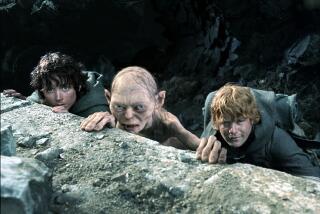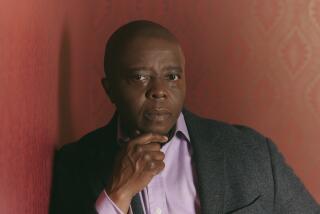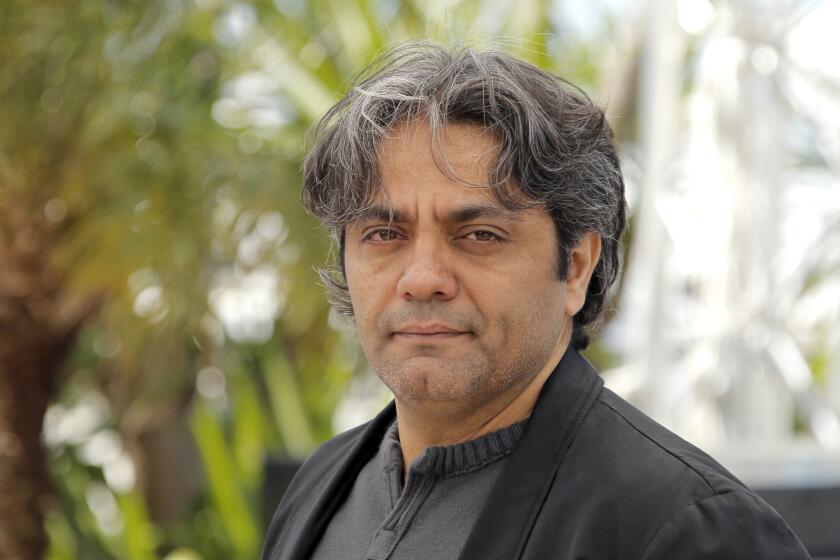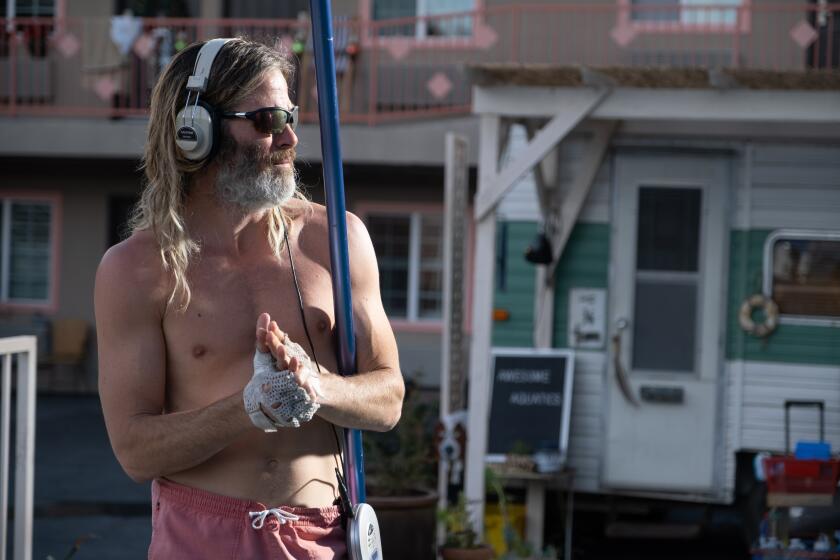There’s a Fine Art to Underlining the Themes in ‘Friends & Neighbors’
Alex Katz has been a prominent artist since he began exhibiting his work in 1953, and his work has been seen on billboards in Times Square and in films before, but he is getting more media exposure than ever before now, thanks to a new film by Neil LaBute.
Known for his boldly cropped portraits of sophisticated New Yorkers, Katz has loaned a selection of his work for use in the title sequence and promotion of LaBute’s “Your Friends & Neighbors,” which opened last week. “More people will probably see Alex’s work as a result of the film than have ever seen it before,” says LaBute, whose controversial 1997 debut film, “In the Company of Men,” garnered considerable critical support. “Alex’s work appears in the trailer for the film, the poster, the promotional cocktail coasters, note pads and T-shirts--we’re making maximum use of the paintings he let us use.”
Like “In the Company of Men,” “Your Friends & Neighbors” is a darkly comic inquiry into the sexual politics of the upper-middle class. Written by LaBute, the film features an ensemble cast that includes Catherine Keener, Ben Stiller, Aaron Eckhart and Nastassja Kinski. Also starring is Jason Patric, who co-produced the film and came up with the idea of using Katz’s work.
“I read an article in the March 24th issue of the New York Times that mentioned Alex in relation to the use of alienated imagery in advertising,” Patric recalls. “We were looking for a title sequence then, so I got some of his books, and the minute I saw his work I recognized that the figures in his paintings could be friends and neighbors of our actors.
“Alex’s work revolves around attractive people in settings that appear to be congenial, and it seems as though there should be intimate connections between these people; in fact, there’s a frozen tension underneath and they’re worlds apart,” says Patric, whose description of Katz’s work could just as easily apply to LaBute’s film.
“I showed the books to Neil, and he loved the idea of using the work,” Patric says, “so our editor, Joel Plotch, made a video montage of details from several paintings--’Cocktail Party,’ ‘Pas de Deux,’ ‘Memorial Day’ and ‘Up in the Bleachers.’ We were on a tight deadline and were having trouble contacting Alex, so I finally just opened the phone book. There were two A. Katzes, so I called the first one and got lucky. I introduced myself and explained why I was calling, and he invited me over to show him the video we’d made. After a few seconds, he said, ‘It’s great, you’re welcome to use the work.’ ”
“I had no idea who they were, but I thought the video collage was terrific, so I agreed to let them use my work without having seen the film,” says Katz, speaking by phone from his summer home in Maine. “And when I saw the film, I felt proud to be associated with it--it’s a serious movie for adults.”
As to what LaBute was trying to achieve in his use of Katz’s work, the director says: “A motif of contrasting darks and lights runs through the film, and we looked for paintings that would underscore that. Paintings like ‘Cocktail Party’ communicate the loneliness of the crowded room really beautifully, and Alex has an acute understanding of people who appear to be at ease, yet are profoundly uncomfortable with one another. We felt the characters in Alex’s work would complement ours, because his paintings offer a timeless view of men and women in a metropolitan area, struggling to get along with one another.”
“Neil’s films and my paintings both present generic American types, and I was amazed at how much my people are like his people--they work really well together,” agrees Katz, whose portraits are based on his friends and neighbors. “My paintings are neutral, and you can read whatever you want into them,” the artist adds. “Because the film is about dysfunctional people, the paintings will probably be given a dark interpretation; however, I think my view of human nature is the opposite of Neil’s.
“We all have dysfunctional aspects to our personalities; what’s unique about Neil’s work is that it foregrounds the dysfunction, and I don’t think that’s true of my work,” Katz says. Katz’s work was the final element added to “Your Friends & Neighbors,” and LaBute feels “it unifies the film beautifully and helps place it in a historical context. Some of the paintings we’re using are more than 30 years old, and they help make the point that men and women have been wrestling with the same issues for a long time.”
Katz is gratified that “a painting from 34 years ago is evocative of people today.”
“I think it’s a great compliment when artists want to use my work, and I’ve often allowed it to be used for book covers and illustrations,” he says. Indeed, this is not the first time the 71-year-old artist’s work has appeared in film; his paintings were also featured in Brian De Palma’s 1980 thriller “Dressed to Kill” and the 1995 David Salle film “Search and Destroy.”
Katz completed his last major figure study in 1992 and is now working on paintings depicting reflections on water; his writings on art were collected last year in “Invented Symbols,” a book published by the Frankfurt Museum in Germany (the book was recently made available in an English translation by D.A.P.).
“Alex’s work is obviously a perfect fit for my sensibility as a filmmaker, and I don’t know why this sort of thing doesn’t happen more often,” LaBute says. “I loved the collaboration, and I’m trying to option a story for my next film that I’m hoping Alex will be involved in--I’d love for him to create some of the landscapes where the story takes place.”
Patric’s theory on why there isn’t more interchange between film and fine art is a bit more blunt.
“It’s because the director wants to be the artist,” Patric says. “They want to be the one in control of visual composition and have no interest in sharing the stage with a painter. However, movies don’t have to be ego-driven exercises in auteurship, and we felt it was an honor to collaborate with Alex.”
More to Read
Only good movies
Get the Indie Focus newsletter, Mark Olsen's weekly guide to the world of cinema.
You may occasionally receive promotional content from the Los Angeles Times.






